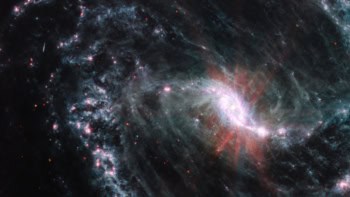Weather conditions on Earth are influenced by a phenomenon known as Rossby waves. These planetary-scale fluctuations arise because the Coriolis force – due to the Earth’s rotation – varies with latitude. The resulting pressure system is associated with the jet stream in the atmosphere and also helps govern currents in the oceans.
Within the past decade, Rossby waves have also been observed within the atmosphere of the Sun. While the Earth’s Rossby waves are purely hydrodynamic, the Sun’s Rossby waves are also influenced by the strong magnetic fields at the Sun’s outer layers. In this video interview, space scientist Mausumi Dikpati introduces solar Rossby waves and explains how they can be used to predict space weather, which can pose a threat to the Earth.
Dikpati is a senior scientist at the High Altitude Observatory, a laboratory of the US National Center for Atmospheric Research in Boulder, Colorado. She studies the dynamics between Rossby waves and solar activity such as flares and coronal mass ejections (CMEs). Developing a clear understanding of these processes could lead to mid-term space weather predictions.



